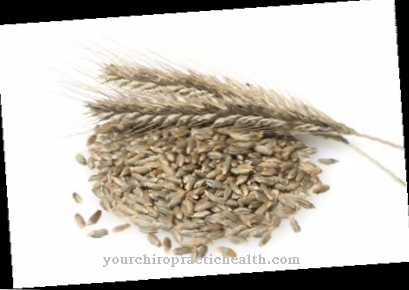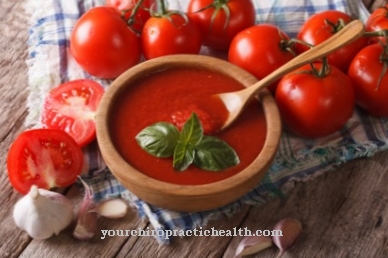The lime is a citrus fruit that grows on trees. The skin is green and the very acidic flesh is dark yellow. The four to five centimeters large and oval lime can be compared to the lemon, but it usually has fewer stones.
In the countries of origin, the lime has a similarly important place as the lemon in Germany. This is not surprising, because after all it is perfect for almost all culinary delights and also valuable for your health.
What you should know about the lime

The lime, which originally comes from Malaysia, belongs to the rhombus family. In the Middle Ages, they brought travelers and crusaders to Europe.
The lime now grows in numerous other tropical and Southeast Asian countries, for example in India, Sri Lanka, Egypt, Mexico, Kenya, Brazil, on the West Indies and in the Dominican Republic. A tree can supply more than 1,000 limes per year. In Germany, the citrus fruit is often referred to as lime. This is due in particular to the similarity to the term lemon (lemon). However, this not infrequently leads to confusion. The lime is actually the sister of the lemon. She is closely related to her. However, the lime is smaller, more acidic and contains fewer pits than the lemon.
A lime makes about twice as much juice. It also has a green peel, while the lemon is yellow. Very often it is left untreated and can be eaten in this case. The lime tastes much more sour and a bit tart than the lemon. The latter also tolerates freezing temperatures, the lime, on the other hand, is extremely sensitive to cold. Therefore, it only thrives in tropical climates. The trees die when there is frost. The evergreen lime trees or bushes bear fruit all year round. Thanks to optimal transport routes, lime is available in Germany all year round.
Importance to health
The lime has many positive effects on health. It has a disinfectant effect and, according to suspicions, prevents cancer. It also alleviates rheumatic complaints and also has a mood-enhancing effect.
The lime is also excellent for a cold, sore throat, bronchitis, sinus infection and fever. The potassium contained is required for the nerve cells, for example. It is also important for the functioning of the heart and muscles. Calcium plays a particularly important role in building and maintaining bones. The lime also has an antioxidant and antiseptic effect due to its essential oil content. The oils contained are also very popular in cosmetics. They have a refreshing, invigorating and concentration-promoting effect. In general, the citrus fruit strengthens the immune system and the body's defenses.
Ingredients & nutritional values
| Nutritional information | Amount per 100 gram |
| Calories 30 | Fat content 0.2 g |
| cholesterol 0 mg | sodium 2 mg |
| potassium 102 mg | carbohydrates 11 g |
| Fiber 2.8 g | protein 0.7 g |
Lime contains slightly less vitamin C than lemon, but it provides the body with more potassium, calcium, magnesium and phosphorus. The citrus fruit is also rich in folic acid, zinc and vitamins, for example vitamins B3, B5, B6 and E. Lime also contains small amounts of sulfur, chlorine and sodium. The lime contains about 90 percent carbohydrates, 6 percent protein and 4 percent fat. 100 grams of lime has consumed 30 kilocalories.
Intolerances & allergies
Some people have sensitive stomachs, so the fruit acids found in citrus fruits attack the lining of the stomach. The result is stomach pain and diarrhea. In diseases of the digestive organs such as the stomach and intestines and the skin such as neurodermatitis, it is advisable to avoid fruit that is rich in acid. Instead, bananas, apples, and pears are advisable. However, it must always be checked individually whether the lime is tolerated.
Shopping & kitchen tips
When buying the lime, you should pay attention to the color: if the peel is bright green, the quality is right. A dark green lime, on the other hand, can taste too sour, a yellow citrus fruit is overripe and often tastes bitter.
After the lime is harvested, the natural protective layer is washed off very often and replaced with a natural or artificial wax to make the fruit more durable. Therefore, limes with the notes "untreated" or "peel is suitable for consumption" do not contain any preservatives or pesticide residues, but they can be waxed. The lime should therefore always be washed off with hot water. The peel is only harmless with an organic lime, but it should also be washed.
Since it is very thin, the pulp dries out pretty quickly. If the lime is left at room temperature for more than five days, it will harden. In addition, it then gives less juice. We recommend storing the lime in a cool and slightly damp room. Here it stays at 10 ° C for up to four weeks. The juice and the peel of the lime can also be frozen. Storage over a long period of time is possible here.
Preparation tips
The lime can be used in many ways. Since it is very sour, it is not consumed pure. But the juice is a good acidulant. It is used in sauces, cocktails and syrups. Freshly squeezed juice from a lime is essential for various classic cocktails, especially caipirinha, mojito and margerita.
For the caipirinha, for example, brown cane sugar, cachaca and ice are used in addition to the lime. But even non-alcoholic drinks can be spiced up with lime juice, for example lemonade drinks and iced teas. Lime is not only used for drinks, but also for food. In the kitchen, the juice or the grated zest of the lime give exotic dishes a good finishing touch. The grated peel also flavored the dough of cakes or pastries. In principle, the lime can be used almost anywhere that a lemon is otherwise used.
However, the aroma goes best with Mexican, Indian, Latin American and Asian specialties. The lime is also suitable as a flavor addition to a fruit salad or yoghurt drink. It also gives quark dishes or desserts a pleasantly fresh note. The citrus fruit is also very popular for the preparation of a fish sauce. For this purpose, the bowl is thoroughly cleaned and rubbed. The lime juice is also often used to acidify meat or fish. The lime also gives rice dishes an unmistakable aroma.
Loomi is made from the dried fruit. This spice is particularly popular in Arab countries. Lime is also used in cosmetics, for example in the manufacture of various creams and shampoos.








.jpg)



.jpg)



.jpg)







.jpg)


